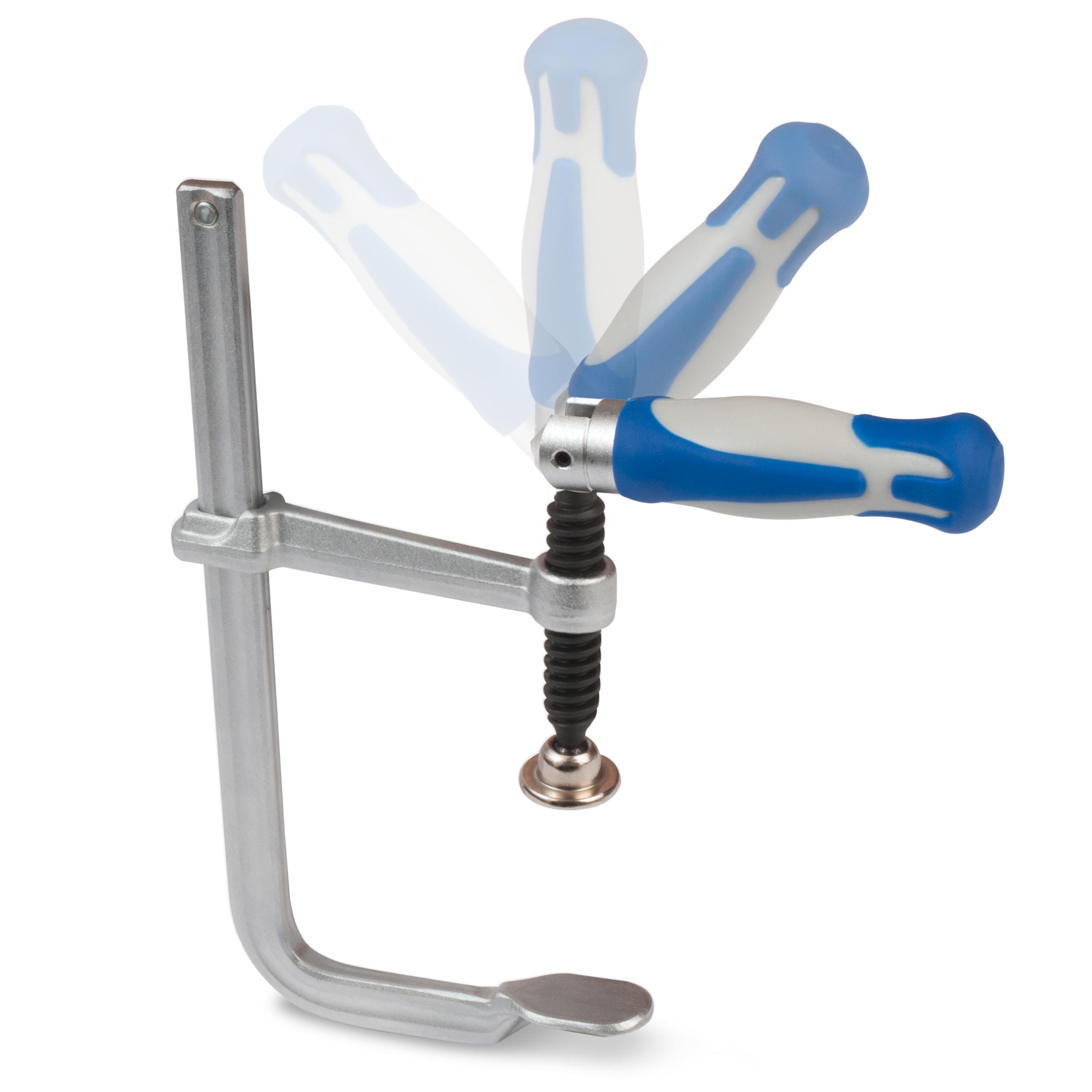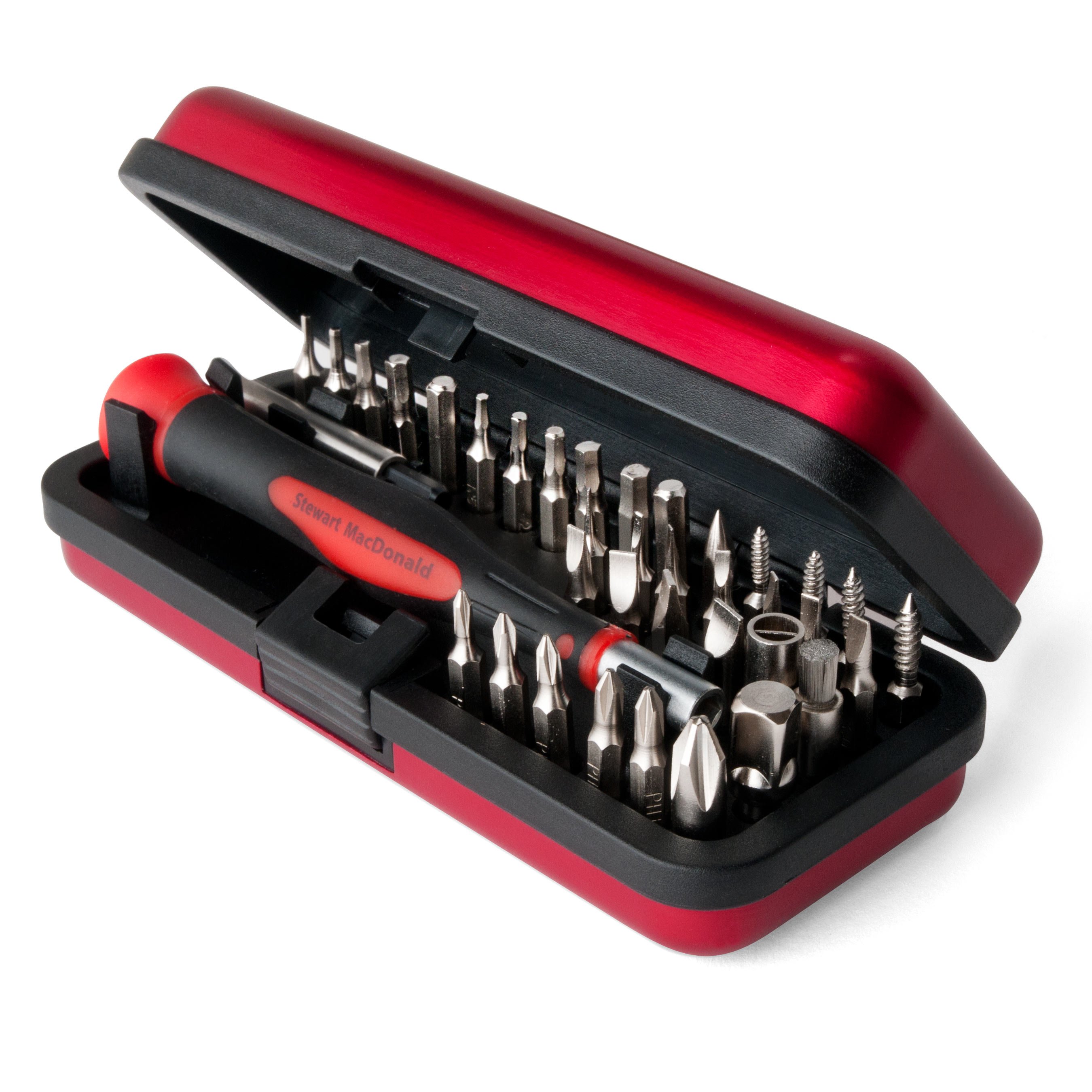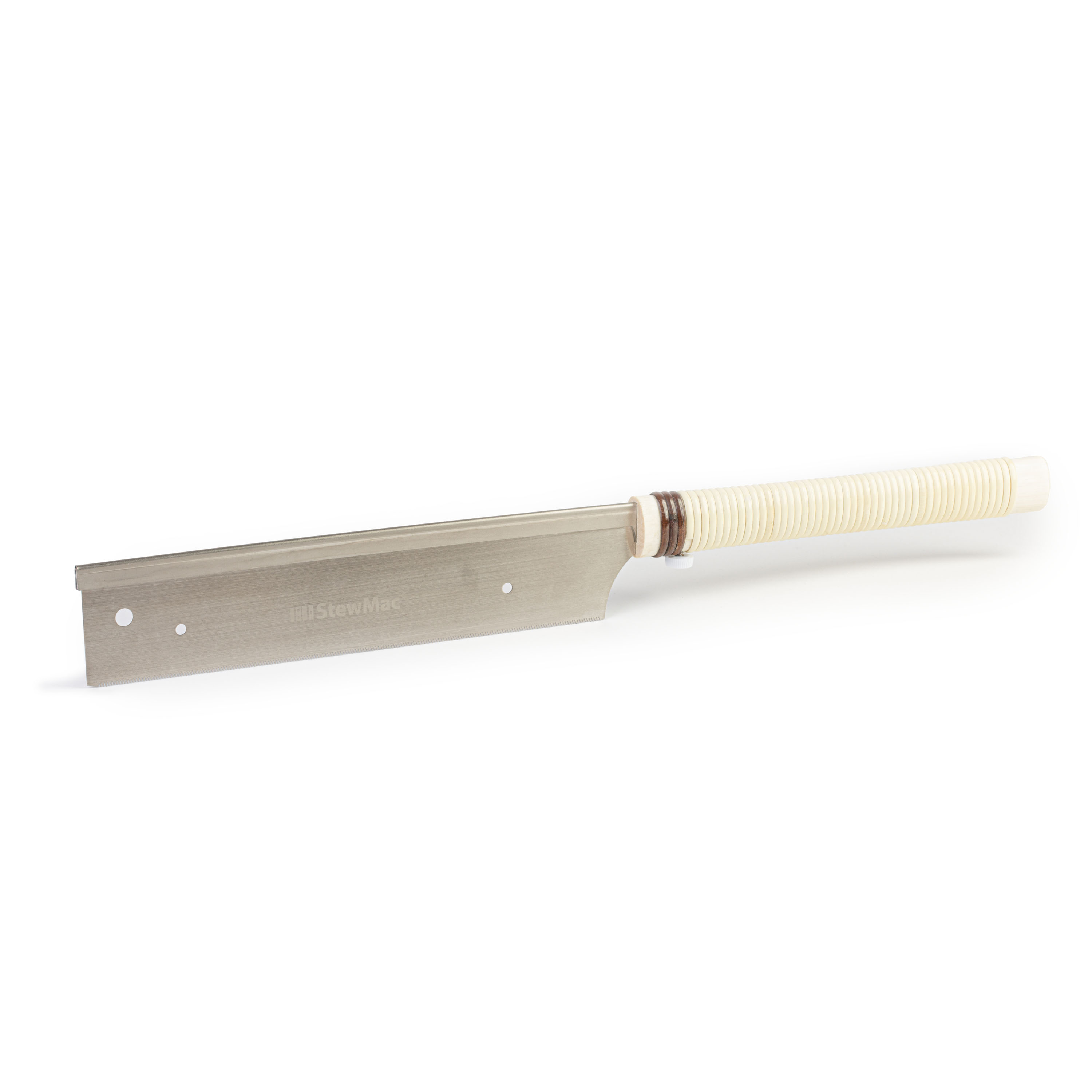Sticky guitar tuners: redrilling the peg holes
Issue 235 January 29, 2015
These classical tuners aren’t turning freely — they’re sticking. The holes for the tuner barrels were never drilled quite right, so Dan Erlewine re-drills them, using our Tuning Machine Drill Jig for Slotted Pegheads.
About the guitar in this video: This classical guitar was hand made in the 1960s. It was a gift from the maker to his wife (now his widow, unfortunately). After storing it for many years, she brought the guitar to Dan’s shop to get it playing again.
- A tool that didn’t exist when this guitar was made: our Tuner Drill Jig
- Modifying a string winder for classical tuner keys
- Masking tape to keep from drilling too deep
Video Transcription
[on-screen text reads: Trade Secrets! Stewart-MacDonald]
[on-screen text reads: Sticky guitar tuners: redrilling peg holes. Dan Erlewine, Stewart-MacDonald]
Dan Erlewine: I've been working on this guitar for six weeks. I'm right down to actually being able to play it and I love it, but it's hard to tune because the tuners are stuck in the peg. These barrels are rubbing the wood, and it's really stiff, and it shouldn't be that way. I think it's because these holes were drilled by hand, it's a handmade guitar, back in the '60s. And we didn't have a tool then, like a Drill Jig, that can clamp to the peghead and guide the drill bit, so all the holes are drilled equally across the length of the peghead. I'm just going to use this as a drill guide and ream them out, and I think that will solve the problem.
Removing the strings using a modified string winder
If you have worked on many classical guitars, or nylon strings in general, you know it takes a while to get them on and off the barrels, there's a lot of winding, especially when your String Winder doesn't fit on those fancy pearl knobs. But we have a tip for how to take care of that.
First we drill a hole, end to end through the winder, and then I saw two slots down to the holes, to give me a channel on either side [on-screen text reads: Japanese Fret Saw]. Now the winder will fit around those pearl knobs, and any other larger size knobs. It's worth taking the time to make one of these because it sure beats winding nylon strings by hand.
Redrilling the peg holes
Once the strings are removed I take the tuners out, and then I place the jig over top of the holes using some paper underneath to protect the finish on the headstock [on-screen text reads: Tuning Machine Drill Jig]. I line the jig up using the tuners as a guide. When it's right where it needs to be, I clamp it down so it doesn't move [on-screen text reads: Swivel Handle Clamp].
Then I drill each of the holes. I put a piece of tape on the bit to act as a depth stop, so I don't drill all the way through the middle of the headstock. I do the same thing on the other side to make sure they're all uniform all the way around. Part of the problem on these tuners is that the original holes weren't drilled quite deep enough. I used the tape as a depth stop so I can drill just a little bit further into the headstock to give those tuner posts a little more room to move.
When all six holes are done, back on go the tuners, and they should turn a little bit easier. Yeah, that's what we're after. There we go. That's all I wanted was to get this guitar in tune. Little thing like tuners, can make a big difference. This guitar is really great. These tuners are 44 years old, I think. If it was my guitar, it's so good I'd put a set of Irving Sloane Tuners on it. It's worthy of them.




